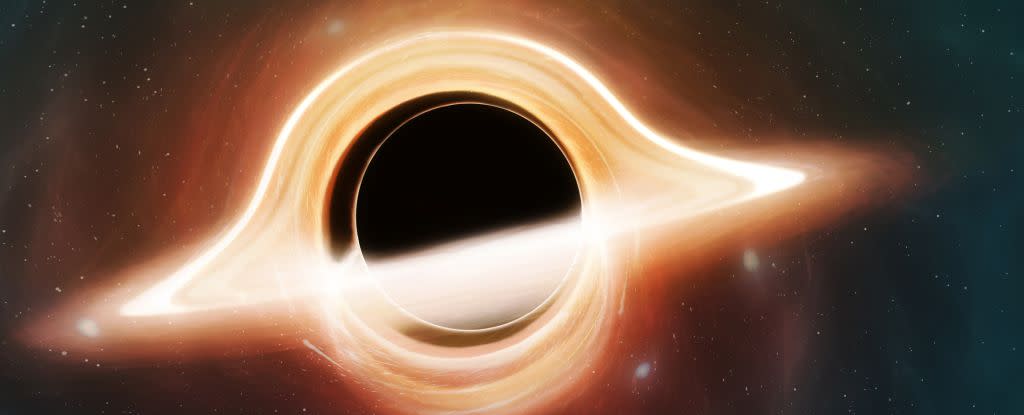New 'Missing Link' Black Hole Spotted Lurking in The Galactic Center

It seems that we're finally locating at least some of the Universe's 'missing' black holes.
A cluster of stars called IRS 13 near the center of the galaxy seems to harbor a black hole in its midst. Moreover, the way these stars swarm and orbit suggest that the black hole is a rarity – one in the middleweight mass range, between those that have a star-like mass and the supermassive monsters.
Such intermediate mass black holes have been found exceedingly rarely, which makes IRS 13 exciting in and of itself… but the icing on the cake is its location.
At just 0.1 light-years from the galactic center, the black hole appears to be one of the building blocks that feed the ongoing growth and evolution of the supermassive black hole at the Milky Way's core, Sagittarius A* (Sgr A*).
This is a vital clue that can help us understand how black holes grow, bridging the gap between stellar-range masses and supermassive black holes.
Black holes are the evolutionary endpoint in the lifespan of a massive star, but the observed masses of these objects are puzzling.
In the stellar mass range, we have black holes that form from the collapsed cores of massive stars (and mergers between them). For a black hole formed from a single star, the upper mass limit is around 80 times the mass of the Sun.
Supermassive black holes have a poorly defined mass range, but it's generally accepted to be millions to billions of times the mass of the Sun. Anything between about 100 solar masses and 100,000 to a million solar masses is the intermediate mass range, in which shockingly few objects have been found.
The reason it's shocking is because it leaves vacant an evolutionary pathway between small black holes and big ones.
There's a gap in the observation statistics between stellar-mass and supermassive black holes that can't easily be explained – which means that we have little to no evidence of the growth from one point to the other.
IRS 13 was discovered just over 25 years ago, and has been puzzling astronomers ever since. At first, it was thought to be a single, massive star. Then a binary star. Then a Wolf-Rayet star, a massive star on the brink of supernova.
It has since been identified as a small cluster, but still a puzzling one. It's so close to Sgr A* – a black hole with a mass of 4.3 million Suns – that such a cluster shouldn't be able to maintain its close structure.
A team led by astrophysicist Florian Peißker of the University of Cologne in Germany wanted to resolve this mystery, so the researchers took a look at the way stars and gas clumps in the cluster are moving. They were expecting the motion to be relatively random, but instead found that it was quite orderly.
There are two possible explanations for this. One is the influence of Sgr A* somehow tweaking the orbits of the objects in IRS 13. But there must, the team reasoned, be something within the cluster, gravitationally keeping it intact.
They performed observations and modeling to see if they could work out what that something was. By tracing the motions of the cluster, they identified the location of where that dense object might be.
At that location, they observed X-rays and a ring of ionized gas, rotating at a speed of around 130 kilometers (81 miles) per second.
They then calculated the mass of the object in the center of the ring, using all these motions. Their object tipped the cosmic scales at around 30,000 solar masses. There's only one thing that could be: an intermediate mass black hole.
Future observations with state-of-the-art instruments will give us more insight into this enigmatic object, but for now, this cluster seems to represent a significant step towards understanding black hole evolution.
"IRS 13 appears to be an essential building block for the growth of our central black hole SgrA*," Peißker says.
"This fascinating star cluster has continued to surprise the scientific community ever since it was discovered around twenty years ago. At first it was thought to be an unusually heavy star. With the high-resolution data, however, we can now confirm the building-block composition with an intermediate-mass black hole at the center."
The research has been published in The Astrophysical Journal.

